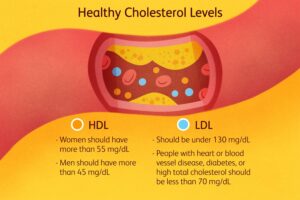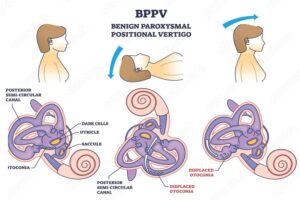Ventilator-Associated Pneumonia (VAP) is a significant concern in healthcare, particularly in intensive care units (ICUs). This article aims to provide a comprehensive understanding of VAP, its causes, symptoms, prevention strategies, and treatment options. By the end of this article, you will have a clearer picture of how VAP affects patients, how it can be prevented, and the best practices for managing this condition.
What is VAP?
Ventilator-Associated Pneumonia (VAP) is a type of lung infection that occurs in people who are on mechanical ventilation breathing machines in hospitals. It typically develops 48 hours or more after intubation (the insertion of a tube into the windpipe to aid in breathing). VAP is one of the most common and serious complications for patients requiring prolonged mechanical ventilation.
Causes of VAP
VAP is primarily caused by the invasion of pathogens (bacteria, viruses, or fungi) into the lower respiratory tract. These pathogens can be introduced through various means:
- Aspiration of Secretions: When secretions from the upper airways, mouth, or stomach enter the lungs, they can carry bacteria that cause infections.
- Contaminated Equipment: Mechanical ventilators, if not properly sterilized, can become a source of infection. Tubes and other equipment can harbor harmful microorganisms.
- Impaired Immune Response: Patients on ventilators often have weakened immune systems, making them more susceptible to infections.
- Biofilm Formation: Biofilms are clusters of bacteria that adhere to surfaces, such as the tubes used in ventilation. These biofilms can be resistant to antibiotics and difficult to eradicate.
Also Read here: Benefits of a Humidifier While Sleeping
Risk Factors for Developing VAP
Certain factors increase the risk of developing VAP. Understanding these risk factors can help in devising strategies to prevent its occurrence:
- Prolonged Mechanical Ventilation: The longer a patient is on a ventilator, the higher the risk of VAP.
- Underlying Health Conditions: Patients with chronic lung diseases, immune system deficiencies, or other severe health conditions are more vulnerable.
- Sedation and Immobilization: Patients who are heavily sedated or immobilized for long periods are at greater risk because they are less likely to clear secretions effectively.
- Prior Use of Antibiotics: Previous antibiotic use can lead to the growth of resistant bacteria, which can cause VAP.

Symptoms of VAP
Recognizing the symptoms of VAP early is crucial for timely treatment. Common symptoms include:
- Fever: A high body temperature is often a sign of infection.
- Purulent Sputum: Thick, yellowish-green mucus may be produced, indicating the presence of infection in the lungs.
- Increased Respiratory Rate: Patients may breathe more rapidly as their body tries to compensate for decreased oxygen levels.
- Worsening Oxygenation: Despite mechanical ventilation, oxygen levels may drop, indicating impaired lung function.
- Crackles or Wheezes: Upon listening to the lungs, healthcare providers may hear abnormal sounds.
Diagnosing VAP
Diagnosing VAP involves a combination of clinical assessment, laboratory tests, and imaging studies. The following steps are typically taken:
- Clinical Evaluation: Healthcare providers will assess the patient’s symptoms, medical history, and physical examination findings.
- Chest X-ray or CT Scan: Imaging studies can reveal signs of pneumonia, such as lung infiltrates.
- Microbiological Testing: Sputum samples or bronchoalveolar lavage fluid may be analyzed to identify the causative organism.
- Blood Tests: Elevated white blood cell counts and other markers of infection can support the diagnosis of VAP.
Preventing VAP
Preventing VAP is a critical aspect of patient care in ICUs. Various strategies can be implemented to reduce the risk of VAP:
- Elevating the Head of the Bed: Keeping the head of the bed raised at an angle of 30 to 45 degrees can reduce the risk of aspiration.
- Oral Care: Regular oral hygiene, including brushing teeth and using antiseptic mouthwash, can help decrease the colonization of bacteria in the mouth.
- Hand Hygiene: Ensuring that healthcare providers wash their hands before and after patient contact is vital in preventing the spread of infections.
- Minimizing Sedation: Reducing sedation levels as soon as possible can help patients regain the ability to clear their own secretions.
- Ventilator Circuit Care: Regularly changing and properly sterilizing ventilator circuits and tubes can prevent contamination.
- Subglottic Secretion Drainage: Using specialized endotracheal tubes that allow for the continuous drainage of secretions above the cuff can reduce the risk of VAP.
Treatment of VAP
The treatment of VAP involves a multifaceted approach, combining antibiotics, supportive care, and, in some cases, adjustments to the mechanical ventilation settings:
- Antibiotic Therapy: Once VAP is suspected or confirmed, broad-spectrum antibiotics are typically started immediately. The choice of antibiotics may be adjusted based on the results of microbiological testing and the patient’s response to treatment.
- Supportive Care: Ensuring adequate oxygenation, hydration, and nutrition is essential. In some cases, additional respiratory therapies, such as bronchodilators or suctioning, may be needed.
- De-escalation of Antibiotics: As the patient’s condition improves and the specific pathogen is identified, the antibiotic regimen may be narrowed to target the causative organism specifically.
- Weaning from Ventilation: Once the infection is under control, efforts should be made to reduce reliance on mechanical ventilation and eventually remove the ventilator.
Complications Associated with VAP
VAP can lead to several serious complications if not promptly and effectively treated:
- Sepsis: The infection can spread from the lungs into the bloodstream, leading to a life-threatening condition known as sepsis.
- Acute Respiratory Distress Syndrome (ARDS): VAP can cause severe inflammation and fluid accumulation in the lungs, leading to ARDS, a condition that significantly impairs breathing.
- Prolonged Hospitalization: Patients with VAP often require extended stays in the ICU, which can increase the risk of other complications, such as pressure ulcers or deep vein thrombosis.
- Increased Mortality: VAP is associated with a higher risk of death, particularly in patients with multiple underlying health conditions or those who develop multidrug-resistant infections.
Prognosis for Patients with VAP
The prognosis for patients with VAP varies depending on several factors, including the severity of the infection, the patient’s underlying health, and the promptness of treatment. While some patients recover fully with appropriate treatment, others may experience long-term respiratory issues or complications related to prolonged ICU stays.
The Role of Healthcare Providers in Managing VAP
Healthcare providers play a crucial role in preventing and managing VAP. This includes:
- Vigilant Monitoring: Regularly assessing patients for signs of VAP and promptly initiating diagnostic and therapeutic interventions.
- Education and Training: Ensuring that all staff members are trained in VAP prevention strategies and adhere to best practices.
- Multidisciplinary Approach: Collaborating with a team of healthcare professionals, including respiratory therapists, infectious disease specialists, and nursing staff, to optimize patient care.
- Continuous Quality Improvement: Implementing and evaluating protocols aimed at reducing the incidence of VAP and improving patient outcomes.
Future Directions in VAP Research and Management
Research into VAP is ongoing, with the goal of developing more effective prevention and treatment strategies. Some areas of focus include:
- Development of New Antibiotics: With the rise of antibiotic-resistant bacteria, there is a pressing need for new antibiotics that can effectively treat VAP.
- Improved Ventilation Techniques: Advances in mechanical ventilation technology aim to reduce the risk of VAP by minimizing the need for prolonged intubation.
- Vaccination: Research is being conducted into vaccines that could protect vulnerable patients from the pathogens that most commonly cause VAP.
- Biomarkers for Early Detection: Identifying specific biomarkers that can predict the development of VAP before clinical symptoms appear could lead to earlier and more targeted interventions.
Conclusion: The Importance of Awareness and Prevention
VAP is a serious and potentially life-threatening condition that requires a proactive approach to prevention, early detection, and effective treatment. By understanding the causes, risk factors, and symptoms of VAP, healthcare providers can implement strategies that reduce the incidence of this infection and improve outcomes for patients in critical care settings. As research continues to advance, the hope is that new tools and therapies will further enhance our ability to combat VAP and ensure the best possible care for those who need it most.













